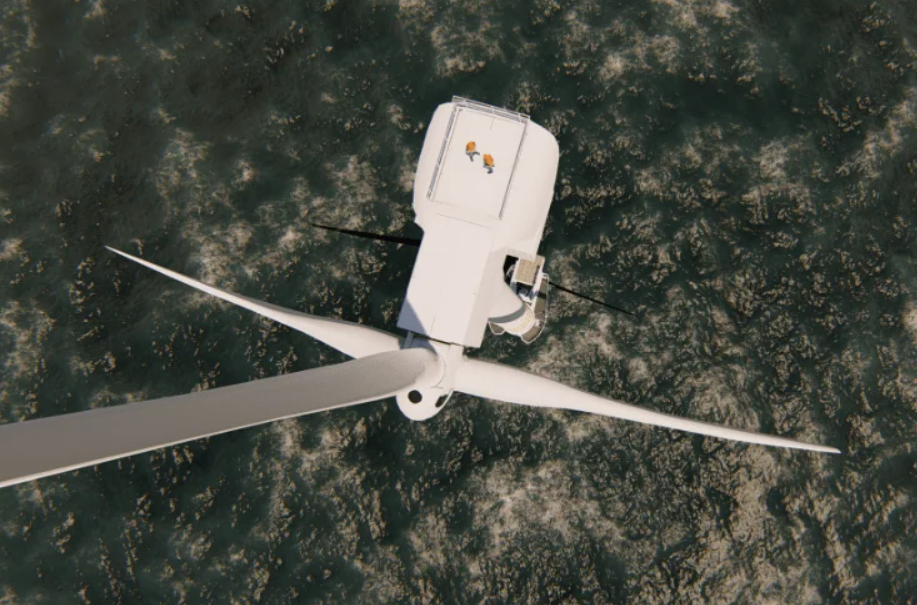Belgium – According to the most recent Global Offshore Wind Report released by the Global Wind Energy Council (GWEC), the offshore wind industry had its best-ever year in 2021 with 21.1 GW of new capacity connected to the grid.
The study demonstrates how the offshore wind industry is gearing up for a new era of explosive growth as governments adopt the technology, set ambitious new goals for net zero emissions, and use it to meet their own goals for energy affordability and security. From 2025 onward, the implementation of these upgraded targets should begin to produce yet more record-breaking years.
Governments are becoming more aspirational about offshore wind, according to GWEC’s Global Offshore Wind Report 2022. According to GWEC Market Intelligence, 260 GW of new offshore wind capacity could be added in 2022–2030, bringing the total global offshore wind installations to 316 GW by the end of this decade. This is an increase of 45.3 GW, or 16.7%, from the report from last year.
Offshore wind is already in a key position for achieving net zero due to the political commitment to net zero. Governments have increased their offshore wind targets as a result of the energy crisis and Russia’s invasion of Ukraine in an effort to secure their energy supplies. Approximately 370 GW of capacity will be available globally by 2031, according to the Global Offshore Wind Report 2022, which is close to the GWEC/IRENA Offshore Wind Energy Compact’s goal of 380 GW of offshore wind installations by 2030.
The transformation of these aspirations into actions will require a massive effort if we are to go further and reach the 380 GW figure by 2030. To ensure that seabed concessions are licensed at the appropriate rate, to ensure that planning procedures are streamlined and made more effective, and to ensure that procurement schemes like auctions can produce sustainable prices that recognize the system and social value of offshore wind energy, the government, industry, and other stakeholders must collaborate.
Governments and the private sector must collaborate in order to create a strong global supply chain that can expand quickly over the coming ten years to accommodate growth. The current state of the supply chain is threatened by inflationary pressure brought on by rising commodity and logistics costs, as well as by “race to the bottom” pricing and uneven demand growth.
Inaction would jeopardize the chance for offshore wind to accelerate the energy transition at a large scale, generating significant local and national employment opportunities, fostering economic growth, and bringing down energy costs while promoting energy security.
The data
Between 2020 and 2021, the number of grid connections increased by a factor of three, and 21.1 GW of new installations raised the total capacity to 56 GW. With a 58 percent increase year over year, offshore wind now accounts for 7% of all cumulative global installations.
The data also provides a convincing illustration of the results that closely coordinated ambition and action can produce. China was responsible for 80% of new offshore installations last year, making 2021 the fourth consecutive year that it has been the global leader in new installations. Vietnam’s proactive approach resulted in increased capacity, and according to the Global Offshore Wind Report 2022, Asia will overtake Europe as the world’s largest offshore market by the end of 2022. According to the report, Europe might not take the top spot again until 2031.
With 57 MW of new installations, the total installed globally reached 121.4 MW, demonstrating that floating offshore wind has now moved past the demonstration stage and entered the pre-commercial phase. 48 MW of those new installations were in the United Kingdom, 5.5 MW were in China, and 3.6 MW were in Norway.
According to the Global Offshore Wind Report 2022, 315 GW of additional offshore wind capacity will be added by 2031, bringing the total capacity to 370 GW — not far from the GWEC/IRENA goal of 380 GW by 2030 for a net zero pathway. As the amount of annual offshore wind installations is anticipated to more than double from 21.1 GW in 2021 to 54.9 GW in 2031, offshore is expected to account for at least 30% of all new global wind installations, up from 23% in 2021.
In light of the UK’s increased floating wind target and the accelerated floating project development activities in Europe, Asia, and North America, which have increased the current global floating project pipeline to 120 GW, GWEC has upgraded its 2030 global floating wind forecast by 14% from last year’s report and projects that 18.9 GW is likely to be built globally by 2030, of which 11 GW will be in Europe, 5.5 GW in Asia, and the remaining GW in North America.
Over 700 GW of offshore wind projects, 120 GW of which are floating wind projects, have been identified by GWEC Market Intelligence as being in various stages of development worldwide.
Currently, offshore wind projects with a 23 GW capacity are being built. Construction of offshore wind projects is now being led by Europe, with a market share of 49.5%, followed by Asia (46.4%) and the US ( 4.1 percent ). With 7.8 GW currently under construction, China is the market with the most activity, followed by the UK (5.6 GW), Netherlands (2.3 GW), Taiwan (2.1 GW), France (1.4 GW), and Germany (1.4 GW) (1.1 GW).
For the most recent information, GWEC members and GWEC Market Intelligence subscribers can download the Global Offshore Wind Report as well as the 2022 Global Offshore Wind Project Pipeline Report right now.





